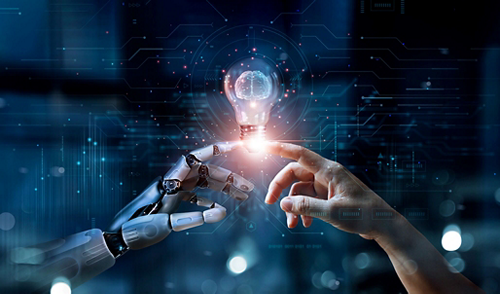AI: A Double-Edged Sword – Unveiling the Potential and Peril of Artificial Intelligence

Artificial intelligence (AI) has become a conversation starter, a buzzword plastered across headlines and whispered with a mix of awe and apprehension. But what exactly is AI, and how is it shaping our world? Is it humanity’s greatest invention or a ticking time bomb hurtling towards an uncertain future? Let’s delve deeper and dissect the fascinating, complex world of AI.
Under the Hood of AI: From Simple to Profound
AI isn’t a monolithic entity; it’s an umbrella term encompassing a diverse range of techniques. At its core, AI empowers machines to mimic human cognitive functions. This can manifest in various ways:
- Machine Learning: Imagine a computer program that learns from experience, just like a human. Through exposure to vast amounts of data, machine learning algorithms can identify patterns, make predictions, and even improve their performance over time. Think of the recommendation engine on Netflix, suggesting movies based on your past viewing habits.
- Deep Learning: Consider this a more sophisticated cousin of machine learning. Deep learning algorithms are inspired by the structure and function of the human brain, using complex neural networks to process information. This allows them to tackle even more intricate tasks, like facial recognition software that can identify you in a photo with stunning accuracy.
- Natural Language Processing (NLP): This branch of AI enables machines to understand and generate human language. NLP powers chatbots that answer your customer service questions and the virtual assistants like Siri and Alexa that respond to your voice commands.
AI for Good: A Force for Progress
The potential applications of AI are vast and transformative. Here are just a few examples:
- Healthcare Revolution: AI is aiding in early disease detection through medical image analysis and is even assisting in drug discovery by analyzing massive datasets of molecular structures.
- Climate Change Warriors: AI can analyze complex environmental data, helping us understand climate patterns and predict weather events with greater accuracy.
- The Personalized Touch: AI can personalize our experiences, from curating educational content for students to recommending the perfect book based on your reading preferences.
- Enhanced Security: AI-powered fraud detection systems can protect us from financial scams, while facial recognition software can be used for security purposes.
The Flip Side of the Coin: The Ethical Concerns of AI

Despite its immense potential, AI development raises significant ethical concerns:
- Bias Blues: AI algorithms are only as good as the data they’re trained on. Biased data can lead to discriminatory outcomes, for example, an AI-powered hiring tool that inadvertently favors certain demographics.
- The Job Market Squeeze: Automation powered by AI has the potential to displace a significant number of jobs, particularly in sectors with repetitive tasks. This raises concerns about unemployment and the need for job retraining programs.
- The Terminator in the Making?: The development of autonomous weapons, also known as “killer robots,” presents a terrifying possibility. The idea of machines making life-or-death decisions without human intervention is a chilling prospect.
- Privacy Paradox: As AI becomes more sophisticated, the potential for privacy violations increases. The ability of AI systems to analyze vast amounts of personal data raises concerns about individual liberties and the potential for misuse.
The Road Ahead: A Human-Centered Approach to AI
The future of AI is not predetermined. It’s up to us to shape its development and ensure it benefits humanity. Here are some crucial steps:
- Open Dialogue: Conversations about the ethical implications of AI need to be ongoing and inclusive. Engineers, policymakers, philosophers, and the public must work together to forge a future where AI serves humanity.
- Ethical Frameworks: Developing robust ethical frameworks for AI development and deployment is critical. These frameworks should establish guidelines for data collection, bias mitigation, and the responsible use of AI in various sectors.
- Human-Centered Design: AI should be designed with human values in mind. Transparency, accountability, and fairness should be cornerstones of AI development to ensure it serves humanity’s best interests.
The Takeaway: AI – Partner, Not Overlord
AI isn’t a mythical superintelligence ready to take over the world. It’s a powerful tool with the potential to revolutionize our world for the better. By acknowledging its limitations, addressing ethical concerns, and fostering a human-centered approach to development, AI can become a force for progress, empowering us to tackle some of humanity’s most pressing challenges.
